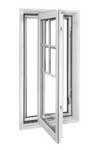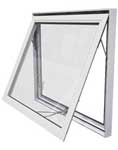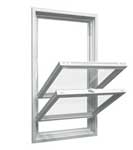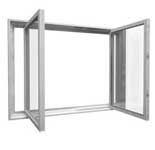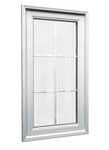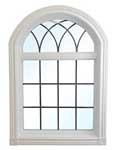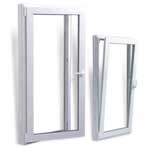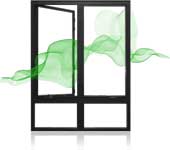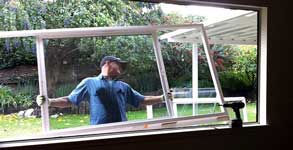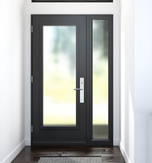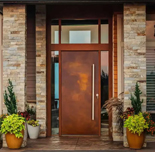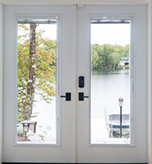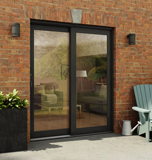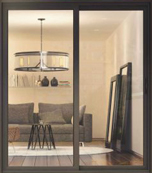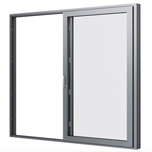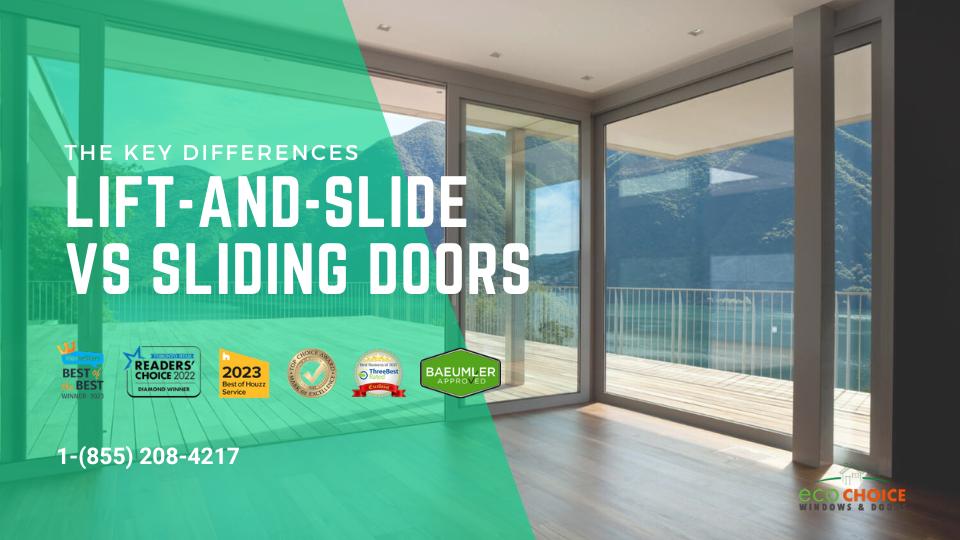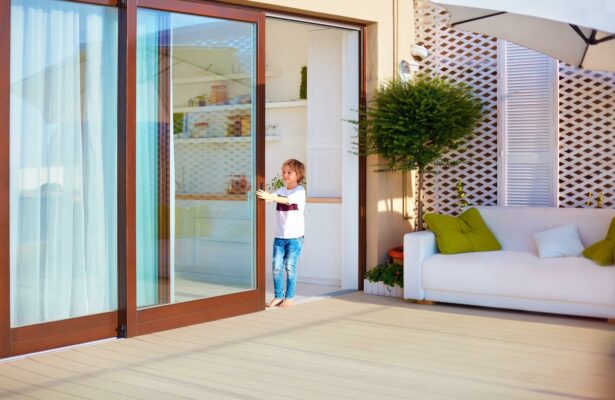Lift-and-Slide vs Sliding Doors: What Are the Differences
Sliding doors have been a staple in North American homes for decades. They are easy to use, allow in a lot of natural light, both open and closed, and can create a large opening to go outside. However, a competitor is coming over from Europe, just like the tilt-and-turn window, that is quickly gaining in popularity: The lift-and-slide door.
This blog will examine these two options of glass doors and their key differences to help you make informed decisions when selecting the ideal door system for your projects. Lift-and-slide vs sliding doors? Let’s explore.
Lift-and-Slide Doors
Lift-and-slide doors represent an innovative solution for contemporary architectural designs. These doors are engineered with a mechanism that allows the entire door panel to be lifted slightly off the track before sliding effortlessly along it. This lifting action is initiated by a specialized handle, which engages the door’s lifting mechanism, enabling smooth and easy movement.
One of the distinguishing features of lift-and-slide doors is their ability to create large openings with minimal effort. You can effortlessly glide even large, heavy panels with fingertip control by lifting the door panel off the track. This feature enhances user convenience and ensures a seamless transition between indoor and outdoor spaces, promoting an open and airy atmosphere.
On top of that, lift-and-slide doors are renowned for their superior sealing properties. When closed, the door panel is securely pressed against the frame, creating a tight seal that minimizes air infiltration and ensures excellent thermal insulation. This enhances energy efficiency and contributes to a comfortable indoor environment by preventing drafts and reducing noise transmission from the outside. This also makes them an excellent option for enhanced security as they cannot be simply shimmied open, detracting intruders.
Additionally, lift-and-slide doors are available in various configurations, including single, double, and multi-panel designs, allowing for multiple applications in both residential and commercial settings. Whether used as patio doors, room dividers, or entrances to outdoor spaces, lift-and-slide doors offer unmatched flexibility and aesthetic appeal.
Sliding Doors
Sliding doors are a classic fixture in architectural design and offer timeless elegance and practical functionality. Unlike lift-and-slide doors, sliding doors operate on a simple yet effective sliding mechanism, where the door panels glide horizontally along a track system. This straightforward mechanism provides ease of use and reliability, making sliding doors popular for various applications.
One of the primary advantages of sliding doors is their space-saving design. By sliding horizontally along the track, these doors do not require additional clearance for opening or closing, making them ideal for areas with limited space. This makes sliding doors particularly well-suited for small rooms, closets, and places where swing doors would be impractical.
Sliding doors are available in various styles and configurations to suit different architectural preferences and functional requirements. From traditional single-panel designs to contemporary multi-panel configurations, sliding doors offer many options in both aesthetics and functionality. They can be used as interior room dividers, closet doors, patio doors, or large-scale commercial entranceways.
Additionally, sliding doors are valued for their seamless integration with indoor and outdoor spaces. When open, sliding doors create a wide opening that promotes natural light penetration and enhances ventilation, promoting a connection with the surrounding environment. This feature is especially desirable in residential settings, where it creates an easy transition between indoor living spaces and outdoor landscapes.
You can customize sliding doors with various glazing (double glazing or triple glazing) options to enhance energy efficiency, security, and aesthetic appeal. Options like double-glazed or low-emissivity glass help improve thermal insulation and reduce heat loss, contributing to energy savings and occupant comfort.

Lift-and-Slide vs Sliding Doors: The Differences
Lift-and-slide doors and sliding doors are two distinct door types with unique characteristics and functionalities. Understanding their differences is essential for making informed decisions in architectural design and construction projects. Let’s explore the differences between lift-and-slide doors and sliding doors:
Operating Mechanism
- Lift-and-Slide Doors: These doors employ a mechanism that allows the entire door panel to be lifted slightly off the track before sliding along it. A specialized handle typically initiates this lifting action, enabling effortless movement and creating expansive openings.
- Sliding Doors: In contrast, sliding doors operate on a horizontal sliding mechanism, where the door panels glide along a track system. This straightforward sliding motion requires minimal effort and space, making sliding doors ideal for areas with limited clearance.
Sealing and Insulation
- Lift-and-Slide Doors: Due to their lifting mechanism, lift-and-slide doors can achieve a tighter seal when closed compared to sliding doors. This enhanced sealing capability minimizes air infiltration, improves thermal insulation, and reduces noise transmission from the outside.
- Sliding Doors: While sliding doors provide adequate sealing when closed, they may not achieve the same level of air tightness and insulation as lift-and-slide doors. However, advancements in design and materials have enabled sliding doors to offer improved energy efficiency and weather resistance.
Space Requirements
- Lift-and-Slide Doors: The lifting action of lift-and-slide doors allows for seamless operation without requiring additional clearance space. This makes them suitable for areas where swing doors or traditional sliding doors would be impractical.
- Sliding Doors: Sliding doors are known for their space-saving design, as they do not swing open or shut. This makes them ideal for rooms with limited space, closets, and areas where maximizing floor space is essential.

Aesthetic Options
- Lift-and-Slide Doors: Lift-and-slide doors are available in various configurations, including single, double, and multi-panel designs, offering versatility in both aesthetics and functionality. They can be customized with different materials, finishes, and glazing options to complement diverse architectural styles.
- Sliding Doors: Sliding doors come in various styles and configurations to suit different architectural preferences. They can be crafted from multiple materials, such as wood, aluminum, or glass, with options for frameless designs or decorative accents.
Security Features
- Lift-and-Slide Doors: Lift-and-slide doors typically incorporate advanced locking mechanisms and robust construction to enhance security. The lifting action of these doors often provides a tighter seal when closed, contributing to increased resistance against forced entry. Additionally, many lift-and-slide door systems offer options for integrated multi-point locking systems, further bolstering security.
- Sliding Doors: Sliding doors provide security features such as locking mechanisms and reinforced frames to deter unauthorized access. While they may not offer the same level of sealing as lift-and-slide doors when closed, sliding doors can still be equipped with secure locking systems, including keyed locks and auxiliary bolts, to enhance protection against intruders.
Choosing the Best Option
Choosing between lift-and-slide doors and sliding doors ultimately depends on various factors, including the specific requirements of your project, aesthetic preferences, functionality needs, and budget considerations.
If space is limited and there is little clearance for door movement, sliding doors may be the preferred option due to their space-saving design. Conversely, lift-and-slide doors can offer seamless operation without requiring additional clearance space, making them suitable for larger openings where swing or traditional sliding doors would be impractical.
For projects prioritizing energy efficiency, noise reduction, and weather resistance, lift-and-slide doors may be the better choice due to their superior sealing properties. If these factors are less critical, sliding doors can still offer adequate sealing and insulation when equipped with appropriate glazing and sealing systems.
Consider the security features each door option offers and assess whether they meet your project’s security needs. Lift-and-slide doors often feature advanced locking mechanisms and sturdy construction, which can enhance security. Sliding doors can also be equipped with secure locking systems to deter intruders, but the level of protection may vary depending on the specific design and hardware chosen.
Evaluate your project’s architectural style and design goals to determine which door option aligns best with the overall aesthetic vision. Both lift-and-slide and sliding doors come in various styles, materials, and finishes, allowing for customization to suit different design preferences.
Consider how the doors will be used in everyday life and assess the ease of operation for occupants. Lift-and-slide doors offer effortless operation and smooth gliding motion, which can be particularly beneficial for large, heavy panels. Sliding doors also provide easy operation but may require slightly more effort to open and close than lift-and-slide doors.
Finally, consider the budget allocated for the door installation and the costs of each option. While lift-and-slide doors may offer advanced features and superior performance, they may also have a higher price tag than sliding doors. Evaluate the cost-benefit ratio and prioritize features essential for the project’s success within budget constraints.
Choose the Professional Lift-and-Slide and Sliding Door Installers
Eco Choice Windows & Doors is a leading supplier and installer of quality windows and doors. We have been in business for over 15 years, installing windows and doors for many satisfied customers across the province.
We have the knowledge, experience and expertise to recommend the windows and doors that best suit your needs for window replacements and new windows. Simply put, we supply the best quality products, expertly installed and built to enhance energy efficiency throughout the home.
Call us today at (416) 690-9992 or complete our convenient online form to book your free, no-obligation consultation!

